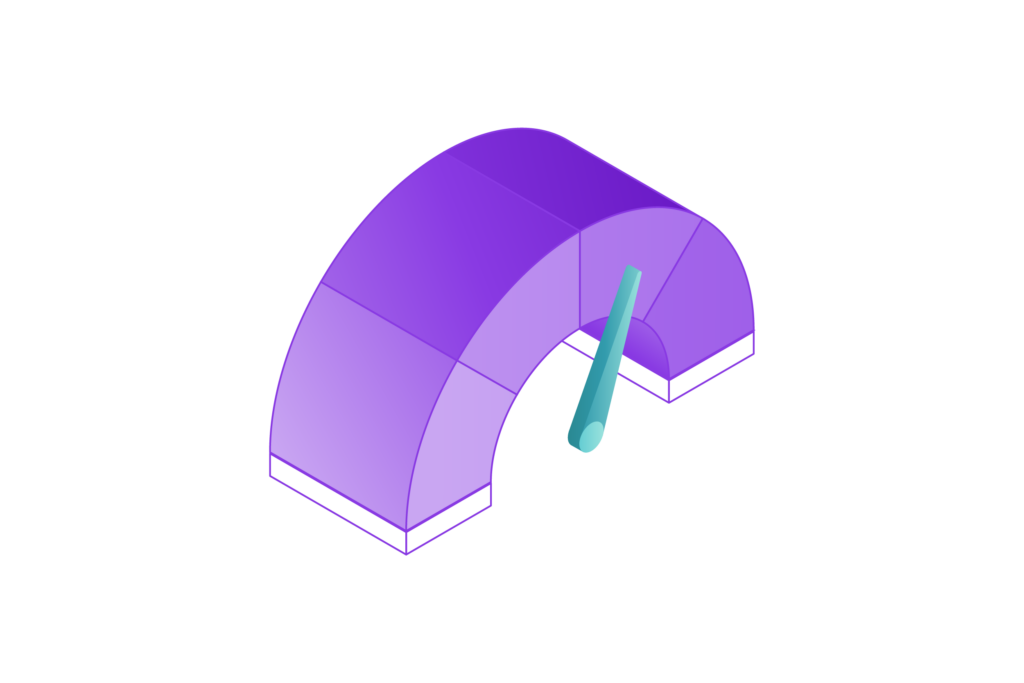
Numerical methods are crucial for solving complex mathematical equations, particularly when exact solutions are difficult or impossible to find. Among the many techniques, the Crank Nicolson method stands out for its balance between accuracy and computational efficiency.
This method, developed by John Crank and Phyllis Nicolson, is widely used to solve partial differential equations (PDEs) in scientific and engineering fields. Its unique combination of implicit and explicit schemes makes it a preferred choice for time-dependent problems.
In this guide, we will break down the Crank Nicolson method step by step. Whether you are a student or a beginner in numerical analysis, this article will help you understand the fundamentals of this powerful approach.
Understanding the Basics of Numerical Methods

Before diving into the Crank Nicolson method, it’s essential to explore the broader context of numerical methods and understand their critical role in mathematics and science.
What Are Numerical Methods?
Numerical methods are systematic approaches used to approximate solutions for mathematical problems that are difficult or impossible to solve analytically. These techniques often involve simplifying complex equations into manageable forms that can be efficiently processed by a computer. Numerical methods bridge the gap between theoretical mathematics and practical applications, enabling solutions to a wide range of real-world problems.
Why Are Numerical Methods Important?
In many scientific and engineering contexts, exact solutions to equations are either unattainable or exceedingly complex. For instance, problems involving heat transfer, fluid dynamics, structural mechanics, or wave propagation typically result in equations too intricate for direct solutions. Numerical methods offer a practical alternative, allowing researchers and practitioners to approximate these solutions with sufficient accuracy for meaningful insights. This capability is invaluable in designing systems, predicting behaviors, and solving problems across industries such as aerospace, energy, and biomedical engineering.
How Do They Work?
These methods often break down the problem domain into discrete segments, applying iterative algorithms or approximations to find solutions step by step. Computational power plays a crucial role here, as advanced algorithms can process vast amounts of data quickly, making these methods not only feasible but also efficient for large-scale problems.
Where Does the Crank Nicolson Method Fit In?
The Crank Nicolson method holds a special place in the toolbox of numerical techniques. It is specifically designed for solving parabolic partial differential equations, such as those found in the heat equation. This finite difference method is known for its balance of stability and accuracy, making it an ideal choice for time-stepping problems. Unlike some methods that may sacrifice precision for simplicity or efficiency, the Crank Nicolson approach achieves second-order accuracy in both time and space, ensuring reliable results in many applications.
By understanding these foundational concepts, we can better appreciate how the Crank Nicolson method operates and why it has become a cornerstone in computational mathematics.
Also Read: What is Intrinsic Value? Understanding the Core Concept
What Is the Crank-Nicolson Method?

The Crank-Nicolson method is a powerful time-stepping technique often used in numerical analysis and computational modeling. It seamlessly blends the advantages of explicit and implicit methods, earning its designation as a semi-implicit approach. Known for its reliability and precision, this method is widely applied in solving partial differential equations, particularly in areas like heat conduction, fluid dynamics, and financial modeling.
Key Characteristics of the Crank-Nicolson Method
- Implicit Nature: At each time step, the method requires solving a system of equations, making it computationally intensive but highly stable. This implicit characteristic enables it to handle large time steps without succumbing to numerical instability, a common drawback of purely explicit methods.
- Second-Order Accuracy: Accuracy is a hallmark of the Crank-Nicolson method. It delivers second-order precision in both time and space, surpassing many traditional schemes. This level of accuracy makes it particularly appealing for simulations where fine detail and reduced errors are essential.
- Symmetry and Averaging: The method achieves a remarkable balance by averaging the results of explicit and implicit formulations. This symmetry not only ensures consistency but also minimizes numerical errors, offering a refined solution that avoids the pitfalls of one-sided approaches.
Why Use the Crank-Nicolson Method?
This method’s robustness and accuracy make it a preferred choice for engineers, physicists, and financial analysts alike. Whether you’re modeling the diffusion of heat through materials, forecasting stock options, or simulating wave behavior, the Crank-Nicolson method provides a dependable and efficient framework. Its versatility, coupled with the ability to handle stiff problems gracefully, sets it apart as a cornerstone of numerical computation.
The Crank Nicolson Method: Advantages and Limitations

The Crank Nicolson method, a popular numerical scheme for solving partial differential equations (PDEs), offers several strengths alongside notable challenges. The following sections outline its advantages and limitations, accompanied by tables summarizing key points.
Advantages of the Crank Nicolson Method
| Advantage | Description |
| Stability | Unconditionally stable, making it reliable for stiff equations and a wide range of time step sizes. |
| Accuracy | Second-order accuracy ensures precise results, even with larger time steps. |
| Flexibility | Handles various boundary conditions and works with different types of PDEs. |
- Stability: The method ensures numerical stability, which is crucial for solving stiff equations effectively.
- Accuracy: Its second-order accuracy captures intricate details in simulations, making it ideal for extended computations.
- Flexibility: The versatility to handle diverse scenarios makes it widely applicable in practical settings.
Challenges and Limitations
| Limitation | Description |
| Computational Complexity | Requires solving systems of equations at each step, increasing computation time for large problems. |
| Oscillations in Solutions | Prone to oscillations in results under specific conditions like sharp gradients or discontinuities. |
| Implementation Difficulty | Complex to implement for beginners, particularly with intricate boundary conditions. |
- Computational Complexity: Its implicit nature demands solving matrix equations repeatedly, which may slow down calculations for large-scale problems.
- Oscillations in Solutions: Sharp changes in the initial data can lead to oscillatory behavior, reducing result reliability.
- Implementation Difficulty: Setting up the matrix equations can be daunting, especially for those new to numerical methods.
The Crank Nicolson method stands out for its balance of stability, accuracy, and flexibility, making it a preferred choice in numerical analysis. However, it is essential to consider its limitations, including computational complexity and potential for oscillatory solutions, to ensure appropriate application. By understanding its strengths and challenges, users can leverage this method effectively in solving a wide range of partial differential equations.
How to Implement the Crank Nicolson Method
The Crank Nicolson method, a popular approach for solving partial differential equations (PDEs), provides a balance between accuracy and stability. Here’s a detailed guide on how to implement this method effectively:
Step 1: Discretize the Equation
Begin by converting the continuous partial differential equation into discrete terms using finite difference approximations. Divide the time and spatial domain into small intervals, creating a grid. The Crank Nicolson method is implicit and averages values between the current and next time steps, combining the stability of implicit methods with the accuracy of explicit schemes. Write down the central difference approximations for spatial derivatives and the average formula for time derivatives.
Step 2: Set Up the Matrix Equation
Rearrange the discretized equation into a matrix form, which often results in a system of linear equations. For one-dimensional problems, this matrix is usually tridiagonal, representing the relationships between neighboring spatial points at each time step. Formulate this matrix equation carefully, ensuring the coefficients reflect the spatial and temporal discretizations accurately.
Step 3: Solve the Matrix System
Once the system of equations is established, solve it to find the unknown values at the next time step. Numerical techniques like Gaussian elimination, LU decomposition, or iterative methods such as the Jacobi or Gauss-Seidel methods can be employed. For large systems, specialized solvers for tridiagonal matrices (e.g., the Thomas algorithm) are particularly efficient and widely used.
Step 4: Apply Boundary Conditions
Boundary conditions are crucial for ensuring the solution adheres to the physical constraints of the problem. Incorporate these conditions into the system of equations by modifying the matrix and right-hand side vector as necessary. Initial conditions provide the starting values for the simulation, while boundary conditions maintain the problem’s physical relevance throughout the computation.
Step 5: Iterate Over Time Steps
With the matrix system set up and boundary conditions applied, proceed by iterating through time steps. At each step, solve the updated system of equations to calculate the solution for the next time level. Repeat this process until the solution for the entire time span is obtained. Verify the stability and convergence of the results periodically to ensure the method is applied correctly.
Additional Considerations:
- Grid Resolution: Use sufficiently fine grids in both time and space for accurate results, but balance this against computational cost.
- Stability: While the Crank Nicolson method is unconditionally stable for linear problems, monitor oscillatory behavior in nonlinear or poorly conditioned systems.
- Implementation: Implement the method programmatically in a software environment like Python, MATLAB, or C++ for flexibility and efficiency. Libraries for matrix operations can simplify implementation.
By following these steps, the Crank Nicolson method can be effectively applied to solve a wide range of PDEs encountered in science and engineering.
Also Read: Quant Trader vs Quant Researcher: What’s the Difference?
Applications of the Crank-Nicolson Method
The Crank-Nicolson method, a popular numerical technique, finds application across diverse scientific, engineering, and financial domains for solving time-dependent problems governed by partial differential equations (PDEs). Its stability and accuracy make it a preferred choice in scenarios requiring detailed simulations and predictions. Here are some of its key applications:
Heat Transfer Problems
In thermal engineering, the Crank-Nicolson method plays a pivotal role in modeling heat conduction within solids, liquids, or gases over time. For instance, it can simulate how temperature changes across the walls of a furnace, electronic circuits, or building materials, enabling engineers to optimize designs for energy efficiency. This method is particularly effective in capturing temperature gradients accurately over long durations.
Fluid Dynamics
The method is extensively used in computational fluid dynamics (CFD) to simulate the behavior of fluids, including liquids and gases, under varying conditions. It helps in predicting complex phenomena such as turbulence, flow through porous media, and interaction between fluids and solid boundaries. Applications range from designing aerodynamic structures like airplane wings to understanding ocean currents or weather patterns.
Financial Mathematics
In quantitative finance, the Crank-Nicolson method addresses critical problems in option pricing by solving PDEs like the Black-Scholes equation. It ensures precise calculations of derivative prices, even for complex options such as those with multiple strike prices or exotic features. This capability is essential for risk management, portfolio optimization, and financial decision-making.
Environmental Science
Environmental scientists leverage the Crank-Nicolson method to study diffusion and dispersion processes, such as the spread of pollutants in water bodies or the atmosphere. For example, it can model how a chemical spill in a river disperses downstream over time, helping authorities design mitigation strategies. Its adaptability also makes it valuable in climate modeling and ecosystem studies.
Electromagnetic Simulations
The method is applied to solve time-dependent Maxwell’s equations in scenarios involving electromagnetic wave propagation. This is critical for designing and analyzing antennas, radar systems, and communication devices, ensuring that they operate efficiently in various conditions.
Structural Mechanics
Engineers use the Crank-Nicolson method to analyze the dynamic response of structures under time-varying loads, such as those caused by earthquakes, wind, or machinery vibrations. By predicting how stress and strain evolve in materials, the method aids in improving the safety and durability of buildings, bridges, and other infrastructures.
Astrophysics and Space Science
In astrophysics, the Crank-Nicolson method helps simulate processes such as heat transfer in stellar interiors or diffusion of cosmic rays. These simulations contribute to a deeper understanding of celestial phenomena and the development of space exploration technologies.
By combining stability with second-order accuracy, the Crank-Nicolson method serves as a versatile tool across disciplines, addressing challenges where precision and reliability are paramount. Its contributions continue to expand as computational power grows, enabling even more sophisticated applications.
Conclusion
The Crank Nicolson method is a powerful tool for solving partial differential equations, offering a robust combination of stability and accuracy. Its applications span various scientific and engineering disciplines, making it an indispensable technique in numerical analysis.
Disclaimer: The information provided by Quant Matter in this article is intended for general informational purposes and does not reflect the company’s opinion. It is not intended as investment advice or a recommendation. Readers are strongly advised to conduct their own thorough research and consult with a qualified financial advisor before making any financial decisions.

Joshua Soriano
As an author, I bring clarity to the complex intersections of technology and finance. My focus is on unraveling the complexities of using data science and machine learning in the cryptocurrency market, aiming to make the principles of quantitative trading understandable for everyone. Through my writing, I invite readers to explore how cutting-edge technology can be applied to make informed decisions in the fast-paced world of crypto trading, simplifying advanced concepts into engaging and accessible narratives.
- Joshua Soriano#molongui-disabled-link
- Joshua Soriano#molongui-disabled-link
- Joshua Soriano#molongui-disabled-link
- Joshua Soriano#molongui-disabled-link
